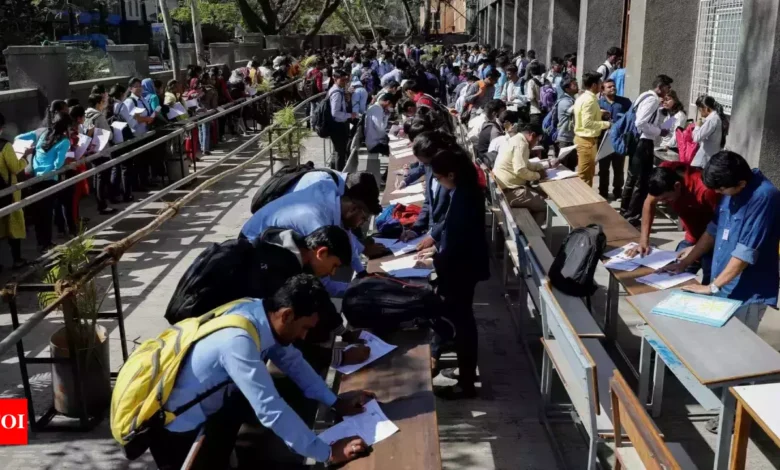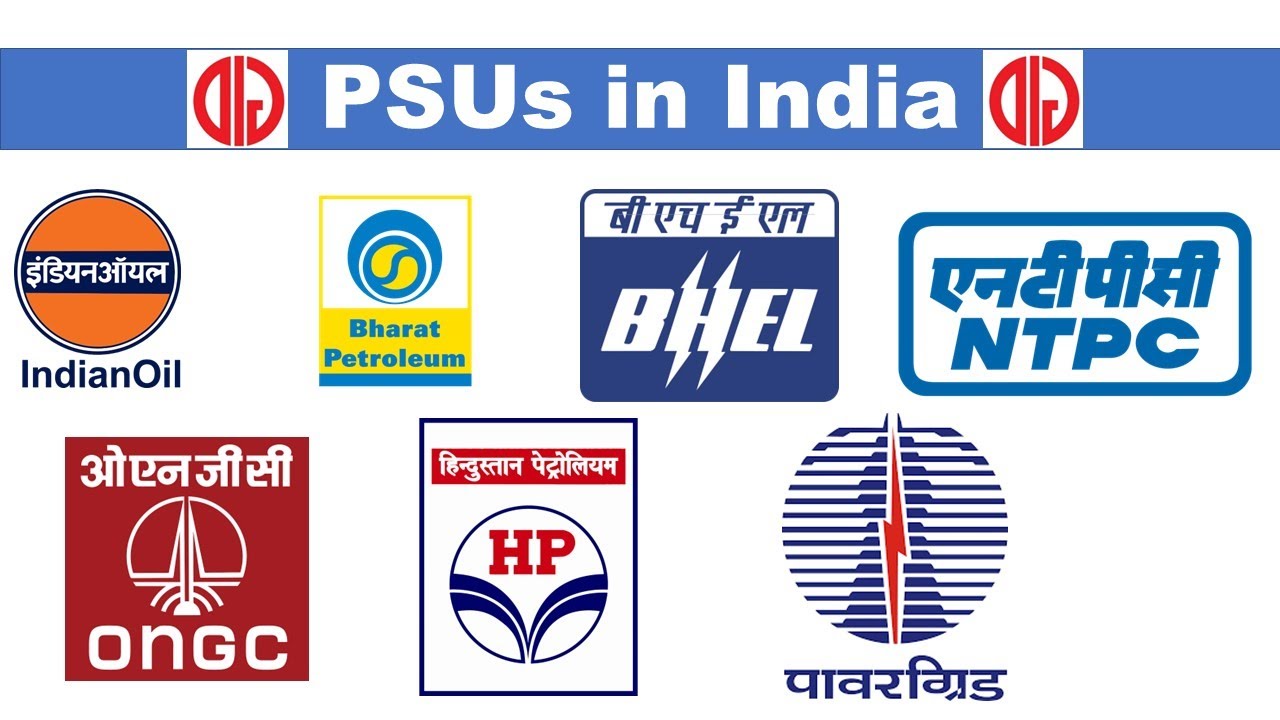India’s 12 PSUs Cut 23,300 Jobs in FY2024. Are You Safe from the Next Big Layoff? How Much Longer Can The Government Ignore Thousands of Lost Jobs in the Public Sector?

Indian employment situations are crashing into terrible lows, and the public sector is not exempt either. A recent report by CNBC-TV18 does not project a pretty picture. India’s most giant PSUs-from powerhouse Coal India to state-owned SBI-have collectively lost over 23,306 jobs in the fiscal year 2024. Headcount reduction is no mere statistic on paper; it is an attack on the livelihoods of thousands of individuals. It is a visible proof that the economy is moving toward a more unmanageable, unescapable dark place.
Overview of Job Cut in PSUs
PSUs had been considered a shelter of employment, with stability and long-term careers associated with the largest public sector undertakings. However, these are not being left out of the general macroeconomic scenario. Of the top 16 PSUs by market capitalisation, 12 of them have cut jobs in FY24. Some of the most prominent players in this bloodbath:
- Coal India, the country’s biggest coal producer, cut 10,349 employees- the number is staggering to the extent of being around 4-5% of the total workforce.
- State Bank of India, India’s largest lender, had 3,562 employees. Then comes a more extensive inorganic story of FY23 layoffs of 8,392 employees, which raises red flagging about perpetual downsizing.
- Other prominent PSUs, like HAL, also contributed to the overall layoff figures, indicating sector-wide retreat in large-scale employment.
On the contrary, four PSUs have shown minimal growth in their workforce; SBI Life Insurance, GAIL India, Life Insurance Corporation of India, and Bharat Electronics.
Why Are PSUs Cutting Jobs?
PSU employment going down is no accident. Several factors drive this trend, each of them rooted in broader economic and structural issues;
Many PSUs are undertaking financial restructuring with the aim of slashing operational costs. Such moves are typically “marketed” to the general public as “efficiency improvements” or “modernisation efforts.” The truth is much more simplistic – jobs are cut.
Over the years, reducing employment has been a frequently employed technique in coal and banking sectors to stay profitable, which also reflects in the cost of operating that increases sharply. With an astonishing 48% wage bill alone, wages and benefits declined by 1% to ₹48,783 crore from FY24 after further headcount reduction.
Technology has been both boon and bane simultaneously. As automation and digital transformation further increase productivity and operational efficiency, the costs are a job loss. Technology deployment has been increased in all the sectors of coal, banking, and manufacturing because these technology deployments replace human jobs. Thousands of workers are losing those jobs. In the case of banking, it follows an increasingly digitised platform, reducing the need for more manual branch-based staff.
While layoffs make the headlines, a big chunk of the reductions is due to natural attrition and superannuation. In PSUs like Coal India, 4-5% employees retire every year. The problem arises here is that instead of replacing them, these retired employees are just not getting replaced. Instead of taking on fresh talent to fill those gaps, PSUs are either resorting to contractual workers or just keeping the positions vacant.
The next disturbing trend is the shift from permanent employment to contractual labour. The share of contractual workers in PSUs has risen dramatically over the last decade, from 17 percent in 2013 to 36 percent as of 2022. This is not only an adjustment but a full-fledged transformation of the workforce. None of the stability, benefits, and protections that permanent jobs offer exist in contractual employment. Workers, therefore, are vulnerable and expendable. This is a naked attempt by PSUs to cut costs at the expense of employee welfare.
The Crushing Blow on Unemployment and the Economy

One needs to make no mistake; these layoffs are not just a pain of modernisation but it is an attack on the Indian worker’s livelihood. The fallouts from this drastic job reduction cut across; the impact is severe.
The job cuts at the PSUs are only fueling the fire in India’s ongoing worsening unemployment crisis. As reported by the National Sample Survey Organisation, the unemployment rates have increased and then decreased. However, such a high number of sackings will push it even further up.
With the loss of 23,306 jobs in FY24 itself, and that was the number even for FY23, the unemployment rate will skyrocket. Formal sector is declining, and yet the same is compelled to send more and more men and women into the unstable informal sector.
It does not merely weigh down the people, but also the economy, at large. The economy simply goes down when thousands of people are laid off from their jobs. The unemployed workers can’t spend money on goods and services anymore. Thus, demand slows down that affects economic growth. When PSUs- the very backbone of the Indian economy – start shedding jobs, it has a ripple effect on the entire nation.
Unemployment will inevitably increase poverty levels. Loss of a secure PSU job will push entire families below the poverty line. Job cuts in PSUs, and especially in regions where the companies are major employers, will increase poverty levels and income inequality manifold. The lack of employment opportunities and social safety nets is pushing more and more people into financial insecurity.
The psychological impact of mass layoffs cannot be overestimated. Workers who lose their jobs are shocked, anxious, and uncertain about what comes next. This strain affects not only the immediate post-layoff associates but spreads to families and entire communities. Those left behind in PSUs do not escape either, since they live in a state of constant fear of being the next axe. Such creates lower morale, lower productivity, and a totally toxic work environment.
Sector-Specific Trends- Coal, Banking, and Beyond
While the overall picture is dreadful, each sector has its own kind of story. Some are being crushed more than others, and knowledge of these trends would go a long way in developing targeted solutions.

Coal Sector
Coal India is reportedly experiencing unprecedented job cuts, a trend which can be seen sweeping through the coal sector. Elsewhere where automation started replacing man-and-labour? Coal mining, once labour-intensive, was mechanised. While productivity is said to improve, thousands of workers are out of jobs. As many as 10,123 employees were let go this year alone after 9,340 left the rolls in FY23.
Banking Sector
The banking sector, too, has been witnessing redundancies. State Bank of India too has been cutting jobs over the last five years to decrease headcount by 10% since FY19. That translates to about a reduction of 25,000 employees over this period. It’s not just SBI; the downtrend is seen in other state-owned banks, from Punjab National Bank to Bank of Baroda and Canara Bank.
Insurance and Electronics Industries
While many industries, such as coal and banking, are in decline, others, like insurance and electronics, have been gaining. SBI Life Insurance hired 3,100 people for FY24, reflecting growing financial product and service demand. Bharat Electronics and GAIL India also saw slight increases of their own, at least indicating that not all businesses are losing their jobs. But such winnings are undersized compared to the massive job losses everywhere else.
In short, the problem calls for immediateness in policy. The government cannot turn its face blind to thousands of workers being thrown into unemployment. There needs to be an array of policy measures put in place to cushion the fall and build a way toward long-term recovery.
For industries like coal and also in the banking sector, which is going towards more automation, there is a need for up-skilling workers to prepare them for moving into new industries. The necessity is to have more training programs on the skills so that they have preparation regarding emerging new sectors such as renewable energy, IT, and digital services.
A short-term measure would include a safety net for laid-off employees, which should consist of unemployment benefits, retraining opportunities, and so on. Thus, if the other support measures are not in place, thousands of laid-off workers will be cast asunder without much to their name in a still-poorly performing economy.
Its expansion becomes a ticking time bomb. The government should step in and regulate such an increasingly common practice, providing full protections, benefits, and job security to a contract worker. Permanent employment cannot be confined to a bygone era. There must be a blending of flexibility on the part of the employers and stability for the employees.
In a nutshell, what the unemployment crisis calls for is more jobs. The policies of the government must, therefore, target the expansion of opportunities for employment, especially where there is room for growth. This would be in terms of tax incentives to companies that hire new employees, infrastructure development projects that entail labour, as well as a conducive atmosphere that would attract investment both internally and internationally.
It should also collaborate with private ventures to spur employment. In addition, it should ensure the job market is strong and that adequate opportunities are available in various fields.
Mass job cuts in PSUs signal not only a mess purely and economically but also a mess fundamentally political because public sector employment has been since its inception in independent India a critical pillar of the social bargain. It offers stable employment with decent wages and benefit packages to an important fraction of citizens.
The country is thus fast losing this component of the social bargain, which is likely to pull apart the tenuous bond between the citizen and the state, foreshadowing mass unrest and precipitating a negative overhaul of the political mainstream.
The mass cutting of jobs in PSUs may give a boon to the growing public anger and social mayhem. Thousands of people losing jobs would be losing their breadwinner employment, but also their dignity. The job loss from PSU is quite often equated with hardship, since the dignity attached to the PSU job often disappears after losing it. Gaining frustration in the community may take to the streets in terms of protests against the government for failing to protect jobs and guarantee economic security.
This is no fantasy scenario, India has had several workers coming out on the streets, demanding better job security, wages, and working conditions. This trend of layoffs going unchecked may see a wider strike and demonstration by people in regions where PSUs become the primary source of employment.
This, therefore, means that if the public sector jobs are lost without being seen by the people, there will be stern political repercussions for the ruling government party in power. PSUs have traditionally been a part of the Indian economy and have given rise to a centrepiece in several political narratives. With PSU jobs dwindling, so too does the government’s credibility for delivering growth in the economy and jobs.
The political spillover of such layoffs can influence the electoral outcome. The dissatisfied electorate, including those residing in states that rely more on PSU employment, might vote against the incumbent party during elections and look for other bets that promise job rehabilitation and stability.
Many PSUs operate in certain regions of India. Job losses here will impact those regions severely. Take the case of Coal India, for example. It operates in many states from the economically backward regions of West Bengal, Jharkhand, and Odisha. Mass layoffs are likely to thrust entire communities into poverty, thus making regional development more difficult to achieve by encouraging already existing economic imbalances.
The result? Ever-widening gaps between affluent urban centres and ailing rural regions. Regional disparity can only fuel social discontent and provide seedbeds for unrest, as the economically disadvantaged take on the role of disparate beneficiaries of the national growth pie.
Role of PSUs in Nation-Building

Public sector undertakings are not just a company but an institution that has played a vital role in the development of an independent India. Be it the employment extended to millions or actively contributing to sectors like energy, banks, and infrastructure, PSUs have remained the backbone of nation building for decades.
But now, in the name of cost and the quest for profit, it threatens to undermine the very foundations of what PSUs were conceived to be. These institutions were built to operate differently, based not on bottom-line calls but on a nobler purpose. PSUs were born with a social mission: to contribute to the nation’s welfare, to provide stable employment, and to spur economic development in areas critical to national security and growth.
The number of jobs being progressively axed speaks of a fundamental shift from this original mandate. PSUs are increasingly run like private corporatization, and efficacy and profitability are mere terms substituted with social responsibility.
That’s dangerous in itself. The organisations forget their social compact with the people of India by merely operating for cost-cutting and downsizing. The government needs to realise that PSUs are for both economic and social purposes and, hence, need to be economically sound while also contributing to the social fabric of the country.
The public sector itself is a strong player to form the right kind of balance in the economy. The growth of the private sector is important and essential, but relying on it to create jobs is not always a good idea. Therefore, the market forces push the private sector, and it is quick at slashing jobs and cost cuts during economic downturns, usually on workers’ rights and social stability as well. PSUs, essentially a cushioning impact on the economies, played a role as providers of stable employment when the private sector has historically failed.
Relentless job cuts are undermining PSUs. How fundamentally can one erode the bedrock of the economy? The scenario will leave millions of workers to fend for themselves in a precarious job market dominated by short-term contracts, low wages, and minimal benefits, thus leading to an increasingly volatile and unequal society.
What Needs to Happen?

It is obvious what should be done, with political will and a solid commitment to the interests of workers and a larger economy. That is what needs to be done if the critical trend of jobs being cut in PSUs is to be arrested and if the future is to be made safer and more just;
The government’s investments need prudent investment and modernisation in order to make PSUs vibrant. Through cost-cutting measures by retrenching staff, it needs to concentrate more on making PSUs more competitive through innovation, technology, and sustainable practices. In this context, it needs to invest in training and upskilling the existing workforce so that they can more effectively face challenges associated with the rapidly changing global economy.
The PSUs should be energised to play a greater role in the new and emerging sectors.
PSUs must be granted pioneering roles in emerging sectors such as renewable energy, electric mobility and digital infrastructure wherein employment generation and further growth of economy is on the cards. These sectors have massive scope for employment generation as well as economic growth. The government can create new jobs and aim to overcome environmental and technological challenges of the 21st century by putting PSUs at the core of all these industries.
Contract work is too entrenched and needs to be dealt with without further delay. Flexibility in the job market needs to be nurtured in today’s fluid world; however, it should not be a means of undermining the rights of workers and their job security. Government regulations must be stronger regarding the remunerations for benefits in contract workers. Permanent employment must remain in the policies related to the recruitment of public service.
Regions heavily dependent on PSUs, such as coal mining or heavy industries are areas that need special care. The government can introduce job guarantees or social safety nets to the vulnerable areas, specifically for workers, so retrenchment does not throw the community into destitution. It may include retraining, direct employment in public works, or providing incentives for private sector employment in the same regions.
The government can also facilitate the creation of PPPs to encourage employment generation, where required, in the value chains of industries that are considered to be significant to the country’s development. PPPs make innovation and investment attractive and create new employment opportunities to meet social and economic demands.
The job losses in Public Sector Undertakings over the past year in India are not just a one-time glitch but a wake-up call over deeper, systemic failures. As over 23,300 employees lost their jobs in FY24 alone, it’s obvious that the country is at a crossroads. What was once the bedrock of stable employment and economic growth, government policy toward PSUs has increasingly been skewed toward cost-cutting and profit maximisation at the expense of worker welfare and social responsibility.
But it’s not too late to turn back
Investment in modernisation, not to mention workers’ rights and job creation in both traditional sectors and new and emerging ones will reverse this alarming trend of PSUs playing a very important role in nation-building again. Our response to this crisis will determine the fate of millions of workers and, indeed, the economy as a whole.
So the question is: Will the government rise to this challenge and stop the systematic erosion of the backbone of India’s public sector, or let it crumble under unchecked downsizing and short-sighted policies? The answer will determine if India’s labour force can hold out for decades to come.



